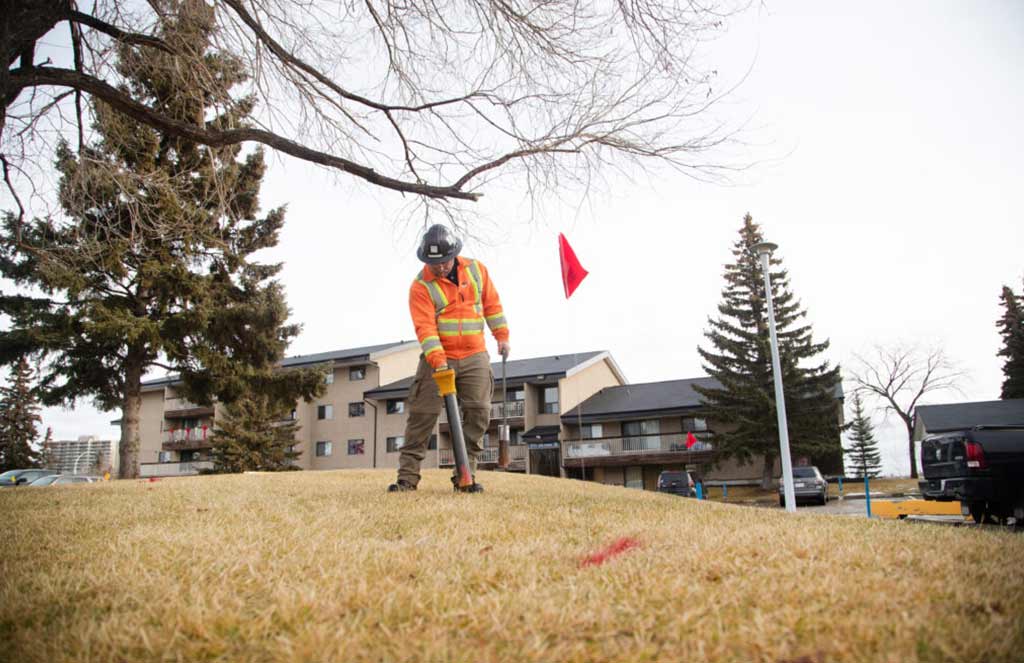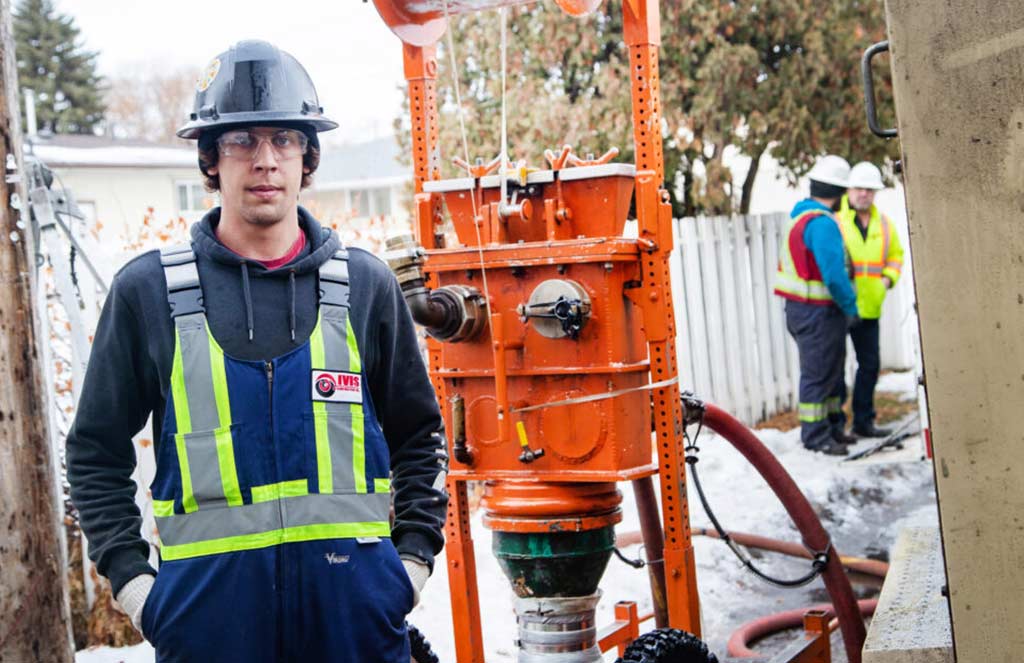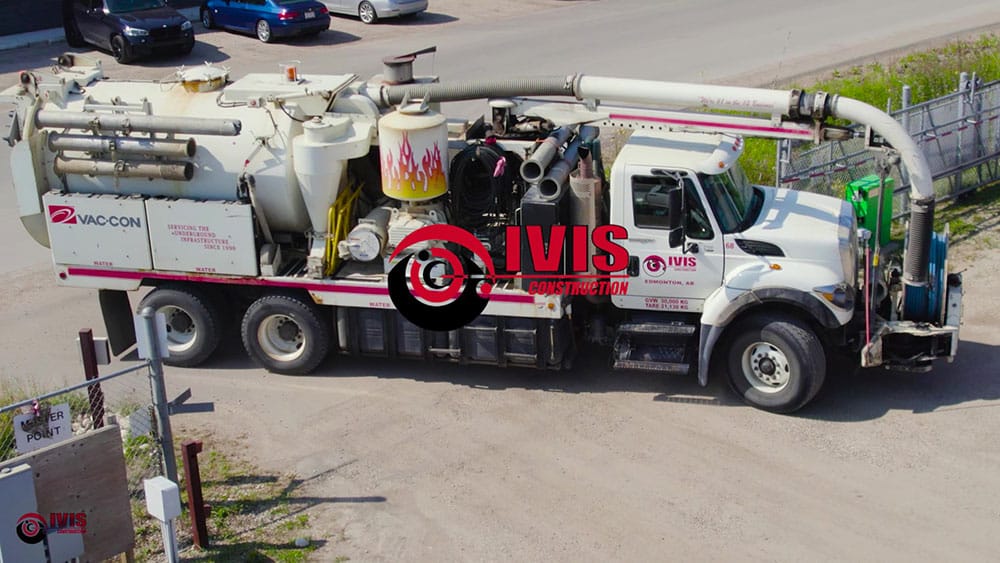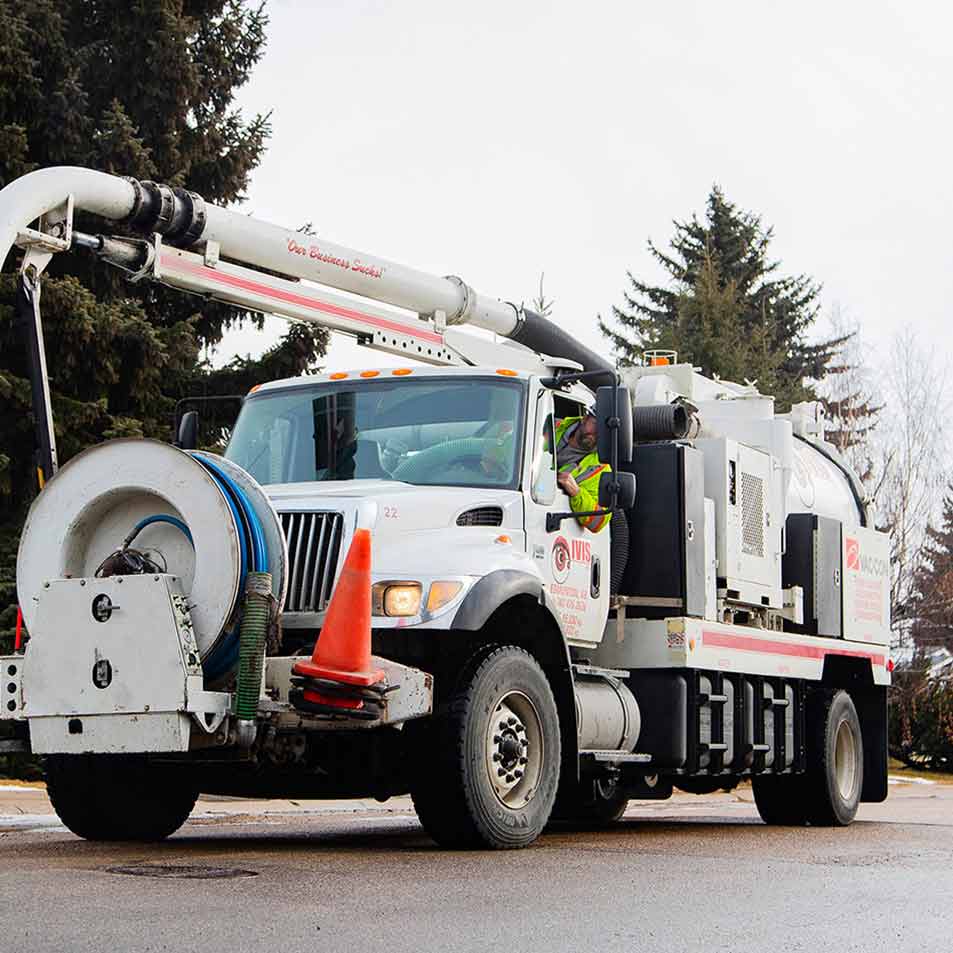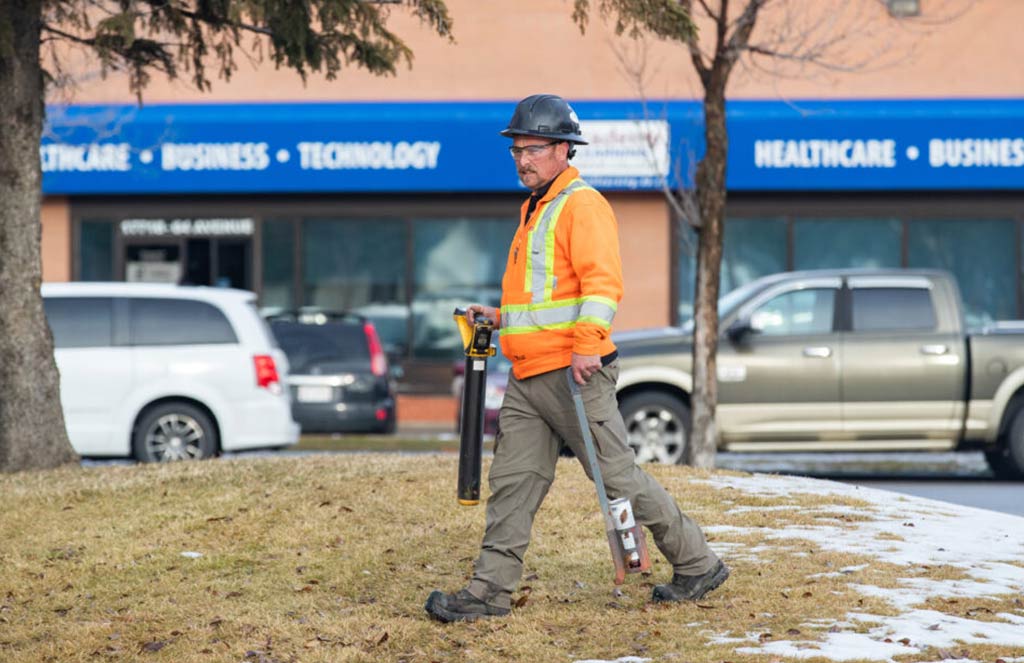
Blog

Whether you’re renovating, building a new commercial property, digging a garden in your front lawn, or starting any other project that requires ground disturbance – know that there are likely utility lines buried on or near your property.
From gas lines to telecommunications lines to power lines, it’s more common than ever for service providers – both public and private – to bury their lines on both residential and commercial properties.
When you dig without identifying buried utility lines, you risk injury, death, and costly utility outages.
Let’s explore how utility line tech works, and when it’s necessary to call before you dig!
What Is Utility Line Locating?
Utility location services identify where buried utility lines are on a property with specialized equipment, namely ground penetration radar (GPR) and electromagnetic induction equipment (EMI).
Both public and private entities offer this service, and most private companies will provide a detailed map at the conclusion of the line locating service for future use.
Detailed maps are particularly useful for homeowners and commercial property owners – as long as no underground utility pipes are installed after the service, you can refer to the map each time you want to start a dig project.
How Does Utility Line Locating Work?
As established, utility line location relies on ground penetrating radar (GPR) and electromagnetic induction equipment (EMI) technology. How these tools locate the lines can be divided into active line location and passive line location.
Let’s explore the differences:
Active utility line location is generally suitable for intact metal pipes.
Your service provider will use EMI equipment on one end of the pipe, which generates a frequency down the length, where another receiver is waiting to mark the signal and trace its length across the ground above.
This method of utility line location is highly accurate, but not always possible. The pipe may be too long, broken, or made of plastic or concrete – thus not able to conduct an electromagnetic frequency.
Passive utility line location uses GPR technology and is great for creating a comprehensive map of the surface you’re searching for. GPR technology can identify the location of all utility lines, pockets of air or defunct wells.
GPR technology works by transmitting a microwave frequency into the ground itself. The frequency will flag changes in-ground structure and soil and send that information back to the receiver above-ground.
In essence, GPR paints the full picture and EMI gets granular with the exact location of metal pipes. When searching for buried utility lines, both technologies are required for the most accurate service.
Public Line Locating Vs. Private Line Locating
Public line location services will either use maps to identify only public buried lines or ground-penetrating radar (GPR) and electromagnetic induction equipment (EMI).
Maps are useful but are often outdated or inaccurate – and will not typically list private lines.
Natural gas, sewage, public water, and power lines will usually fall under are examples of public lines.
Private line location services use specialized equipment to identify buried private and public lines, namely ground penetration radar (GPR) and electromagnetic induction equipment (EMI). Maps, in these cases, are not often practical – either a map was never created or, again, it is outdated, missing information, or inaccurate.
Propane, septic, sprinklers, power lines, and storm drains are all examples of private utility lines. Private lines are typically found in residential neighbourhoods, schools, commercial property, and other private domains.
Whether you own a commercial or residential property, if you’re looking to dig – be sure to call first!
IVIS Construction Inc. – Edmonton’s Utility Line Locating Experts
Are you looking for private utility line locating services for your next home renovation or commercial build? IVIS Construction Inc. has you covered!
We’re just a click or call away. Call us at (780) 476-2626 or fill out our convenient online contact form!
